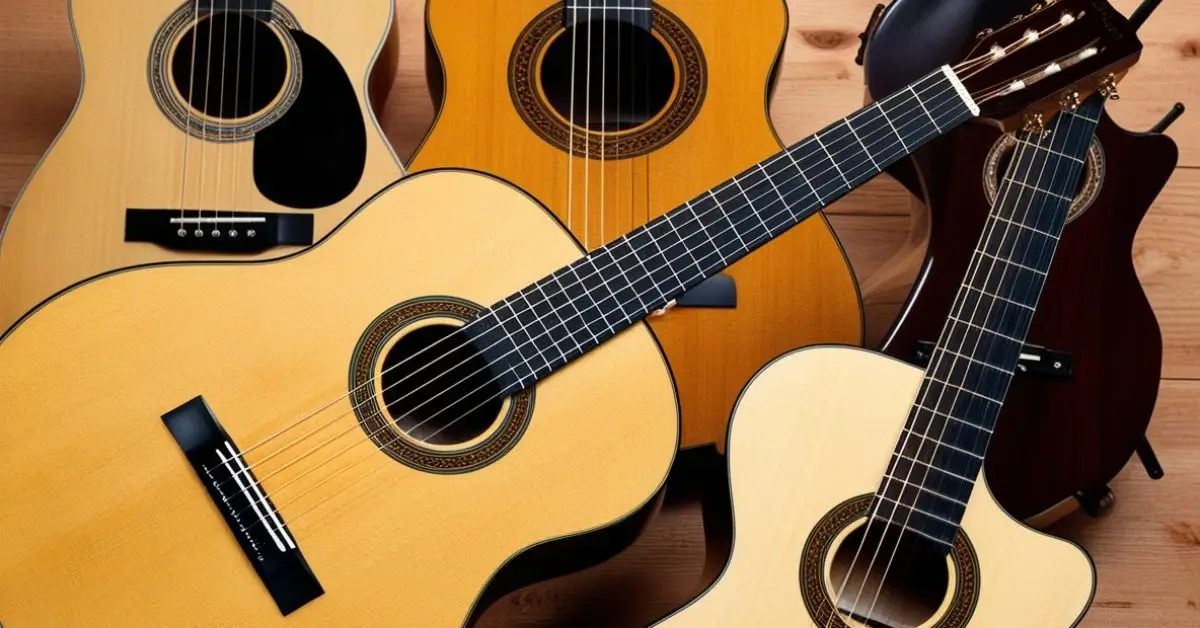The question “how many strings does a guitar have?” might seem straightforward, but it opens the door to a fascinating exploration of guitar variations, history, and design. While the standard guitar features six strings, different configurations exist, catering to diverse musical styles and preferences. This guide dives deep into these variations, helping both beginners and seasoned musicians expand their knowledge.
The Standard Six-String Guitar
The six-string guitar is the most common and iconic type of guitar. Whether it’s an acoustic, electric, or classical guitar, this configuration dominates the world of music. The strings are typically tuned as E-A-D-G-B-E, from the lowest (thickest) to the highest (thinnest) string. This arrangement balances range and playability, making it ideal for genres like rock, blues, classical, pop, and jazz.
Six-string guitars are favored by beginners due to their simplicity and widespread availability. They’re the foundation for countless songs and the standard for guitar education. From strumming chords to intricate solos, this type of guitar covers most musical needs.
Exploring Variations in Guitar String Counts
While the six-string guitar is standard, variations exist to accommodate different musical styles, techniques, and tonal requirements. Each variation offers unique features that expand a guitarist’s creative potential.
1. Twelve-String Guitars
A twelve-string guitar doubles each of the standard six strings, pairing them in octaves or unison. This creates a lush, harmonic sound that’s rich in overtones. These guitars are often used in folk, rock, and country music to add depth and texture. Iconic songs like “Hotel California” highlight the shimmering quality of twelve-string guitars.
2. Seven-String Guitars
The seven-string guitar adds a lower B string to the six-string configuration. This additional string extends the instrument’s range, allowing guitarists to play deeper, more powerful bass notes. These guitars are popular in metal and jazz, where expanded tonal range is crucial for complex riffs and solos.
3. Eight-String Guitars
Building on the seven-string design, eight-string guitars include an extra F# string below the low B. This configuration is favored by experimental and progressive metal musicians who seek an even broader tonal palette. With these guitars, players can explore rich, extended chords and intricate low-end melodies.
4. Harp Guitars
A harp guitar combines a standard six-string body with additional unstopped strings that are plucked independently. These extra strings, which can number up to 14 or more, provide resonant bass notes and are used to create complex polyphonic textures. Harp guitars are often featured in experimental and fingerstyle genres, allowing musicians to achieve an orchestral sound.
5. Bass Guitars
Although technically not a traditional guitar, bass guitars are worth mentioning. They typically have four strings, tuned E-A-D-G. However, five-string and six-string bass guitars also exist, offering an extended range for advanced bassists.
A Brief History of Guitar String Evolution
The guitar’s history provides context for its varied string counts. Early string instruments like the lute and vihuela featured different string configurations, ranging from four to ten courses (pairs of strings). These instruments laid the groundwork for the modern guitar, which settled on six strings during the 18th century.
As music evolved, so did the guitar. Musicians sought ways to expand the instrument’s capabilities, leading to the creation of seven-string, twelve-string, and extended-range guitars. Today, guitarists continue to innovate, pushing the boundaries of what’s possible with additional strings and hybrid designs.
Comparison of Guitar Types and Their String Counts
| Guitar Type | Number of Strings | Best For |
|---|---|---|
| Six-String Guitar | 6 | Beginners, general-purpose use |
| Twelve-String Guitar | 12 (6 pairs) | Folk, rock, and country |
| Seven-String Guitar | 7 | Jazz, metal, and extended-range music |
| Eight-String Guitar | 8 | Progressive metal, experimental music |
| Harp Guitar | 7 to 20 | Fingerstyle, orchestral arrangements |
| Bass Guitar | 4 to 6 | Low-end support in various genres |
Why Choose a Guitar with More Strings?
Choosing a guitar with additional strings can open up new creative opportunities. Here are some reasons why musicians might opt for extended-range instruments:
- Wider Tonal Range: More strings mean access to lower or higher notes, allowing for greater musical expression.
- Complex Chords: Additional strings enable intricate chord voicings, particularly in jazz and classical music.
- Unique Sound: Instruments like twelve-string and harp guitars create distinctive sounds that stand out in recordings and performances.
- Adaptability: Extended-range guitars are versatile, accommodating multiple genres and playing techniques.
However, it’s worth noting that these guitars often require advanced skill levels and can be more challenging to master.
Tips for Beginners Exploring String Variations
If you’re new to the guitar world, starting with a six-string guitar is a wise choice. It provides a solid foundation and ensures access to a wealth of learning materials. Once you’ve developed your skills, consider experimenting with other types.
Here are some tips for beginners:
- Focus on Fundamentals: Master basic chords, scales, and strumming techniques on a six-string guitar.
- Experiment Gradually: Try out seven-string or twelve-string guitars to see how they feel and sound.
- Understand the Purpose: Choose a guitar type that aligns with your musical goals. For instance, a twelve-string guitar is great for rich, harmonic textures, while a seven-string guitar is ideal for extended low-end riffs.
- Seek Guidance: Consult with experienced guitarists or instructors to explore options and receive tailored advice.
How to Maintain Guitars with Multiple Strings
Guitars with more strings require extra care and maintenance. Here are some tips to keep your instrument in top shape:
- Regular Tuning: Instruments with additional strings can go out of tune more easily. Tune them regularly to maintain their sound quality.
- Proper Storage: Store your guitar in a temperature-controlled environment to prevent warping or damage.
- String Care: Replace strings periodically to preserve tone and playability. For twelve-string guitars, consider restringing in pairs for consistency.
- Cleaning: Use a microfiber cloth to wipe down strings and the fretboard after each use, especially for guitars with intricate designs like harp guitars.
Conclusion
The number of strings on a guitar can vary widely, from the standard six strings to complex setups with 12 or more. Each variation serves a unique purpose, catering to different musical styles and player preferences.
Understanding these options not only enhances your appreciation of the instrument but also helps you make informed decisions as a musician. Whether you’re strumming chords on a six-string acoustic or exploring the rich harmonics of a twelve-string guitar, the possibilities are endless.
For a deeper understanding of guitar types and their capabilities, check out educational videos online or visit a music store to try different models. Expanding your knowledge of guitar strings is the first step toward unlocking your musical potential












